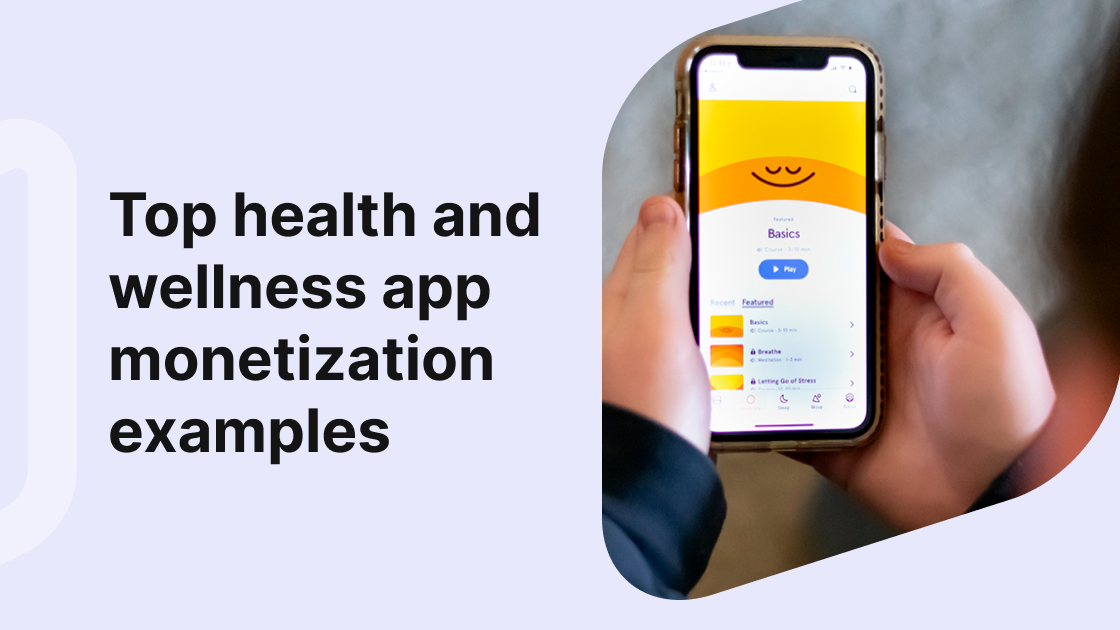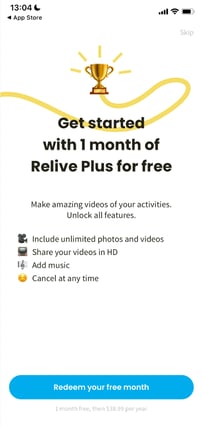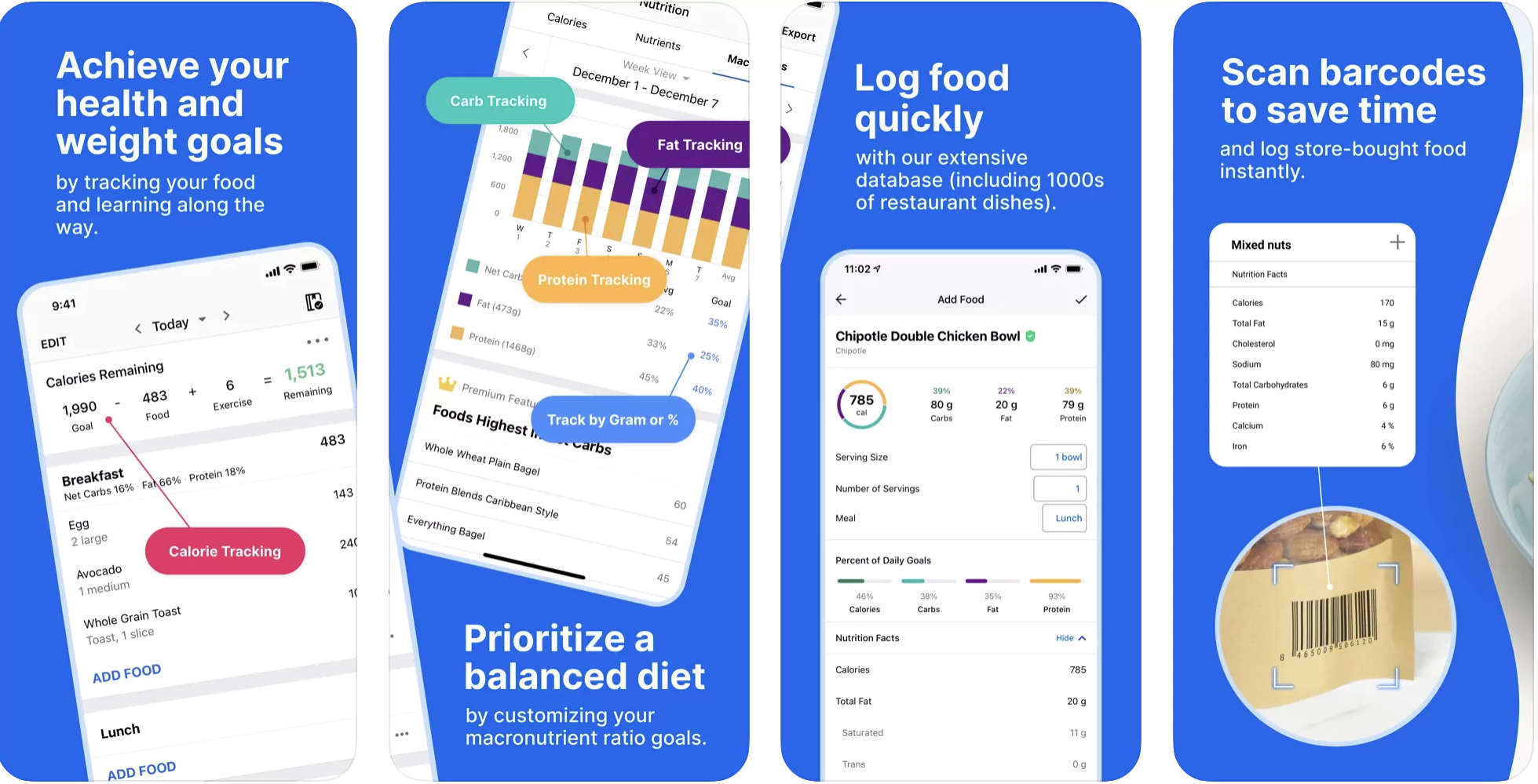Top health and wellness app monetization examples
2 June 2023
HealthLearn everything you need to know about app monetization strategies in our handy guide to health and wellness apps.
Get our latest resource
8 app onboarding flows defining 2026
We analyzed 8 top-performing apps — TikTok, Wise, Nike, Expedia, Fitbit, Strava, Pinterest, and Flo — to uncover the patterns shaping 2026’s best onboarding experiences.
This playbook reveals the patterns shaping next-gen onboarding — what works, why it works, and how you can apply it to your own experience.

Aurélien Léger
Subscription & Growth Director
To succeed in this competitive industry, you’ll need to develop a solid understanding of the market and what consumers are looking for before you even begin focusing on app monetization.
If you are looking for ideas on how to monetize a health and wellness app, read on to learn about:
Over the last few years, the health, wellness, and fitness app market has experienced significant growth, with more and more people prioritizing their physical and mental well-being. According to a recent industry report, the global health and wellness app market size was valued at USD 43.5 billion in 2022 and is expected to expand at a compound annual growth rate (CAGR) of 12% between 2023 and 2030.
As the industry continues to evolve with new apps constantly entering the market, some of the most popular genres of health and wellness apps include:
Consumers look for various features and functionalities in the apps they download, depending on their individual needs and goals. The list of most popular features includes:
The health, wellness, and fitness market can be tough to crack because diets and lifestyle changes can quickly fall by the wayside when consumers are not sufficiently encouraged and motivated to continue.
So, while there are several ways to monetize an app, it's essential to balance revenue goals with user experience to ensure that your products and services provide real value and will remain successful over time.
The key lies in finding the sweet spot between value, convenience, and functionality. Here are a few of the tactics and strategies you could employ. You don’t need to use them all, but settling on a process where you can A/B test a variety of approaches is usually the most effective way to ensure you reach as wide an audience as possible and maximize opportunities to upsell extra features wherever possible.
The term "freemium" is a combination of the words "free" and "premium." Freemium app revenue models offer a basic version of the app for free, but charge users for access to more advanced features - like a larger library of workouts, diet plans, or techniques, etc. For example, Headspace offers a free version of its sleep and meditation app with basic meditation exercises, but charges users $12.99 per month or $69.99 annually to access additional content, including:

Noom app's paywall
Subscription-based app revenue models charge users a recurring fee to access the app's content or features. It’s standard practice to offer both monthly and annual plans, and many health and wellness apps utilize a free 7-day trial to hook users in and commit to an ongoing subscription.
Subscription models offer more high-value content than freemium models. For example, the popular weight loss app Noom offers subscribers various weight loss programs that can be tailored to individual needs with expert advice, nutrition lessons, food logging, recipes, meal planning, and exercise recommendations.

MyFitnessPal
In-App Purchases involve selling additional features or content within the app. Common in-app monetization features on the best health and wellness apps include add-ons like personalized meal plans or customized workout routines that users can purchase to enhance their experience. For example, MyFitnessPal offers a premium subscription for either $9.99 per month or $49.99 per year that provides users with additional features such as:
Health and wellness apps can generate significant revenue by playing ads. One of the simplest ways to monetize an app, this strategy involves charging advertisers for displaying their ads to your user base. The fee for showing a standard ad (where ads are shown to every app user, regardless of their demographic profile) is usually lower than for custom ads (which utilize user profiles to target specific themes to specific people). Fitbit is one of the leading fitness apps to use this strategy, displaying various ads from other fitness and wellness brands to its users.
Affiliate marketing involves partnering with other companies to promote their products or services within your app. This app monetization strategy works by earning a commission for each sale generated via official referral links. For example, a health and wellness app might partner with a supplement company and earn a commission on each sale of one of its products. A good example is the Fitness Blender app, which promotes affiliate workout equipment and supplements using links embedded within the app.
App developers can generate significant revenue by selling user data to third-party companies, so this has become a popular strategy employed by some of the best health and wellness apps on the market. This app monetization model capitalizes on the demand for consumer data by collecting information about user exercise habits, nutrition, sleep patterns, etc., and selling it to companies who use it for research or marketing purposes. For example, Strava sells user data and metrics to urban planners and transportation companies that use it to improve biking and pedestrian infrastructure.
Looking for further insights from top-notch experts from the Health, Fitness and Wellness categories? Listen to some episodes of our Subscription League podcast:
Company Spotlight: Health and Fitness App Productization Platform, with Sunny Dulay (Breakthrough)
How to bootstrap the #1 health and fitness app with Ania Wysocka (Rootd)
Purchasely makes subscription optimization easy. Our innovative paywall builder is the most intuitive no-code tool for in-app subscription maximization, allowing you to build native paywalls and A/B test your pricing & UI like never before. Plus, our growth platform is connected to the major mobile engagement solutions in the industry, including OneSignal, Airship, Batch, Clevertap, Customer.io, Iterable and MoEngage.
2 June 2023
HealthLearn everything you need to know about app monetization strategies in our handy guide to health and wellness apps.

Aurélien Léger
Subscription & Growth Director
5 January 2023
Subscription Podcast HealthSunny Dulay, a mobile app productization veteran shares his experience from the world of health & fitness apps, tips for onboarding a community, and...

Bomee Lafitte
Content Marketing Manager @ Purchasely
27 September 2022
Company News Customers Health EducationDozens of new US apps from categories such as Health & Fitness, Education, Social are powering their In-App Subscription with Purchasely's growth...

Laurent Libano
CRO @ Purchasely